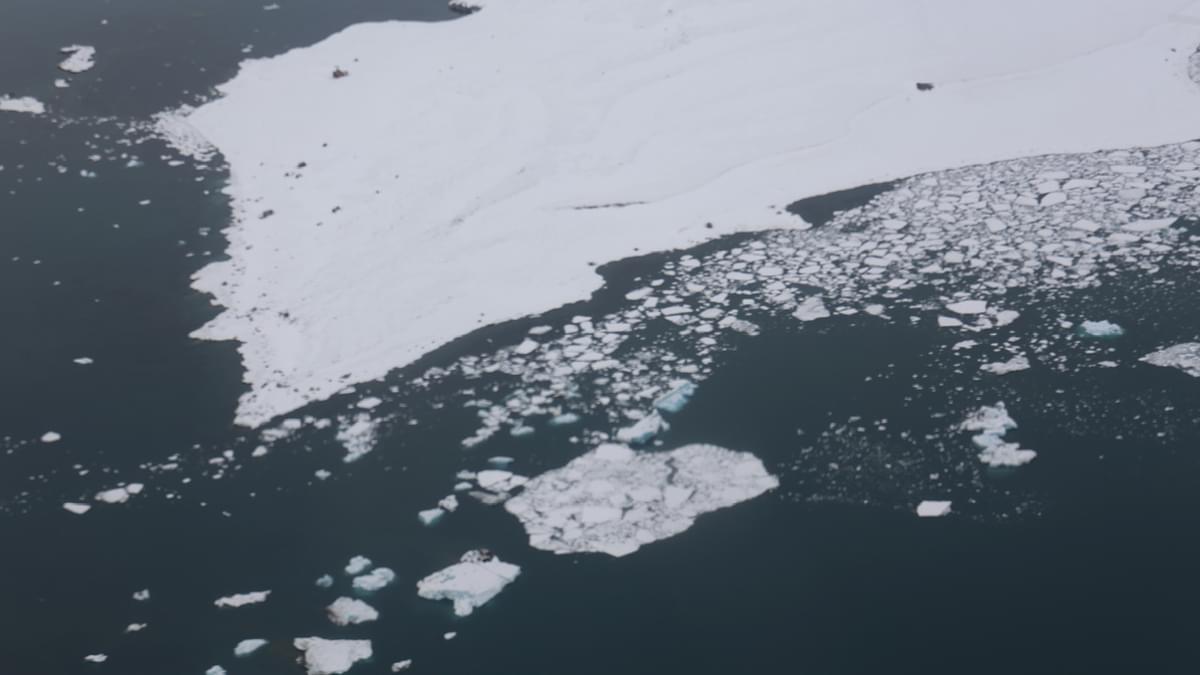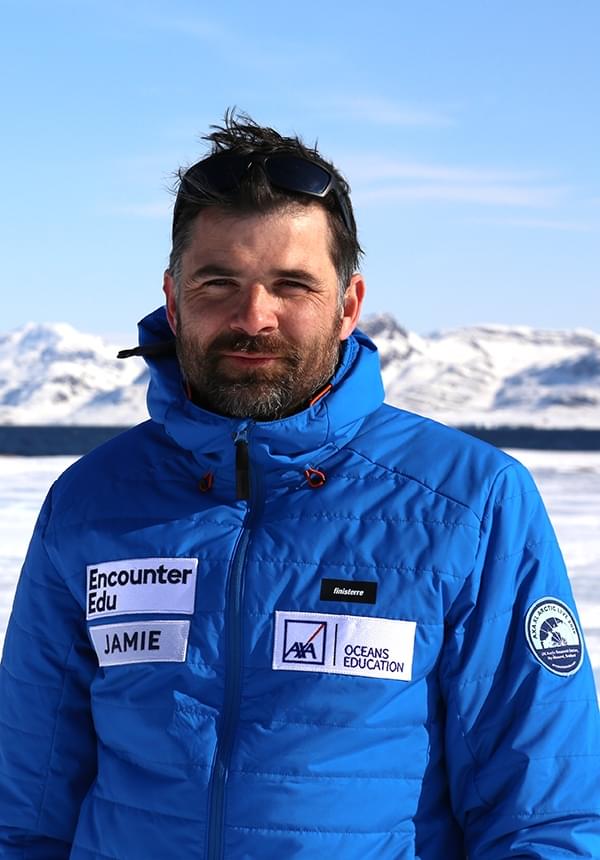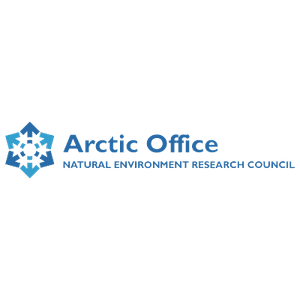
What happens if the Arctic melts?
Due to the COVID-19 (Coronavirus) outbreak, AXA Arctic Live 2020 live lessons will be delivered as a virtual event, with speakers joining from where they are, rather than from the UK's Arctic Research Station.
This live lesson broadcast is a great way of learning about sea-level rise and clear up common misconceptions such as how melting sea ice in the Arctic will cause sea levels to rise.
The investigation will provide students an opportunity to observe over time and compare how the melting of different types of ice in the Arctic and Antarctic will affect sea-level rise.
Before Session
Arrange students into groups, organise all resources needed for the experiment, found here. To help make the live investigation run smoothly, it will be helpful to have all resources prepared for your students to use.
Session steps
1. Introduction (5 mins)
Jamie will open the session with a welcome and brief introduction to the expedition including any shout-outs to registered classes.
During this time students to get into their allocated groups and set up their experiments.
2. Subject knowledge (5 mins)
Jamie will then proceed to speak about how the Arctic is changing and the importance of working scientifically to better understand changes in the environment. Then the team will do a resources check with your students before guiding them in the steps to set up the experiment.
3. Activity time (25 mins)
Jamie will ask students to predict what will happen to the water (sea) level as the ice melts. Students should then share with a partner.
Jamie will then discuss more about how the Arctic is changing, what causes sea level rise and why it is an issue. In this exposition, they will discuss the physical states of water and its transition points. Students should observe and describe what happened in their two models, although this may happen later. The team in the Arctic will have on hand examples that have been left to warm and can demonstrate their findings. Students will be available to compare their observations to these once their ice has had time to melt.
4. Q&A and conclusion (10 mins)
After completing the activity Jamie will be able to answer pre-submitted questions and take part in the live chat. At the end of the broadcast, Jamie will suggest some other activities you might like to try and what's coming up in the rest of Arctic Live 2020.
Speakers

Jamie Buchanan-Dunlop
Executive Director, Encounter Edu
Brought to you by



With the support of




What happens if the Arctic melts?
Due to the COVID-19 (Coronavirus) outbreak, AXA Arctic Live 2020 live lessons will be delivered as a virtual event, with speakers joining from where they are, rather than from the UK's Arctic Research Station.
This live lesson broadcast is a great way of learning about sea-level rise and clear up common misconceptions such as how melting sea ice in the Arctic will cause sea levels to rise.
The investigation will provide students an opportunity to observe over time and compare how the melting of different types of ice in the Arctic and Antarctic will affect sea-level rise.
Before Session
Arrange students into groups, organise all resources needed for the experiment, found here. To help make the live investigation run smoothly, it will be helpful to have all resources prepared for your students to use.
Session steps
1. Introduction (5 mins)
Jamie will open the session with a welcome and brief introduction to the expedition including any shout-outs to registered classes.
During this time students to get into their allocated groups and set up their experiments.
2. Subject knowledge (5 mins)
Jamie will then proceed to speak about how the Arctic is changing and the importance of working scientifically to better understand changes in the environment. Then the team will do a resources check with your students before guiding them in the steps to set up the experiment.
3. Activity time (25 mins)
Jamie will ask students to predict what will happen to the water (sea) level as the ice melts. Students should then share with a partner.
Jamie will then discuss more about how the Arctic is changing, what causes sea level rise and why it is an issue. In this exposition, they will discuss the physical states of water and its transition points. Students should observe and describe what happened in their two models, although this may happen later. The team in the Arctic will have on hand examples that have been left to warm and can demonstrate their findings. Students will be available to compare their observations to these once their ice has had time to melt.
4. Q&A and conclusion (10 mins)
After completing the activity Jamie will be able to answer pre-submitted questions and take part in the live chat. At the end of the broadcast, Jamie will suggest some other activities you might like to try and what's coming up in the rest of Arctic Live 2020.
Speakers

Jamie Buchanan-Dunlop
Executive Director, Encounter Edu
Brought to you by



With the support of





